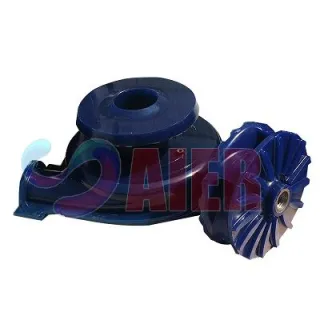Nov . 07, 2024 22:54 Back to list
Efficient Solutions for Sump Slurry Pumps in Industrial Applications
Understanding the Sump Slurry Pump An Essential Tool in Industrial Applications
In various industrial settings, effectively handling slurries—the mixture of solids and liquids—is crucial for operational efficiency. One of the key pieces of equipment used for this purpose is the sump slurry pump. This article explores the design, functionality, and applications of sump slurry pumps, emphasizing their significance in various industries.
What is a Sump Slurry Pump?
A sump slurry pump is a type of pump specifically designed to transport abrasive and viscous mixtures consisting of solids suspended in a liquid. Unlike standard pumps, which may be used to move clean water or light fluids, sump slurry pumps are built to withstand the wear and tear associated with moving heavy slurries. They often feature robust components made from durable materials such as stainless steel, rubber, or hard alloys to ensure longevity and efficient operation.
Design Features
The design of sump slurry pumps typically includes a wide inlet to accommodate the large particles found in slurry mixtures. Additionally, these pumps often use a centrifugal design, which allows them to generate the necessary pressure to move thick slurries through pipelines. Key design features include
1. Heavy-Duty Construction The materials used in the construction of sump slurry pumps are selected for their ability to resist abrasion, corrosion, and degradation caused by harsh substances.
2. Adjustable Impellers Many sump slurry pumps come equipped with adjustable impellers that can be modified depending on the characteristics of the slurry, thus optimizing performance.
3. High Efficiency These pumps are designed to operate efficiently, reducing energy consumption while maximizing flow rates.
sump slurry pump

Applications
Sump slurry pumps are employed in various industries, including
- Mining In mining operations, sump slurry pumps are used to transport tailings—waste materials left over after the extraction of minerals. These pumps help manage the disposal of waste while minimizing environmental impact.
- Construction Construction sites often produce a significant amount of slurry due to excavation and mixing activities. Sump slurry pumps handle this waste efficiently, ensuring that projects can continue without delays caused by water accumulation.
- Wastewater Treatment In wastewater treatment plants, sump slurry pumps are essential for transporting sludge and other thick mixtures. They help ensure that the treatment processes remain effective and that the facility operates smoothly.
- Pulp and Paper Industry The pulp and paper manufacturing process generates a considerable amount of slurry as well. Sump slurry pumps are used to manage this by-product, facilitating the recycling of water and minimizing waste.
Maintenance and Care
Maintaining sump slurry pumps is vital for ensuring their longevity and optimal performance. Routine inspections, regular cleaning, and monitoring wear components like seals and impellers are crucial. Additionally, operators should ensure proper alignment and coupling to avoid unnecessary strain on the pump, which could lead to premature failure.
Conclusion
In summary, sump slurry pumps are integral to many industrial processes where slurries are generated. Their robust design, specialized features, and capability to handle heavy and abrasive materials make them indispensable in industries like mining, construction, wastewater treatment, and pulp and paper manufacturing. Understanding the application and maintenance of these pumps can lead to improved operational efficiency and reduced downtime, ultimately contributing to the success of industrial operations. As industries continue to evolve, the role of sump slurry pumps remains critical in addressing challenges associated with slurry management.
-
Top China Submersible Slurry Pump Supplier Durable & Efficient Solutions
NewsMay.17,2025
-
Submersible Pump Spares Manufacturer High-Quality & Durable Components
NewsMay.17,2025
-
Vertical Centrifugal Sump Pump Supplier China Factory Solutions
NewsMay.16,2025
-
Vertical Spindle Slurry Pump Suppliers High-Quality China Manufacturers
NewsMay.16,2025
-
High-Quality Casting Submersible Pump Parts Manufacturer Durable Solutions
NewsMay.16,2025
-
Vertical Sump & Mud Screw Slurry Pump Company Durable Solutions
NewsMay.15,2025
